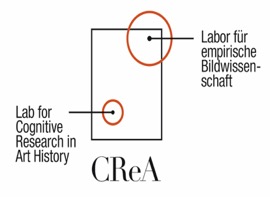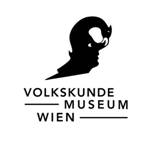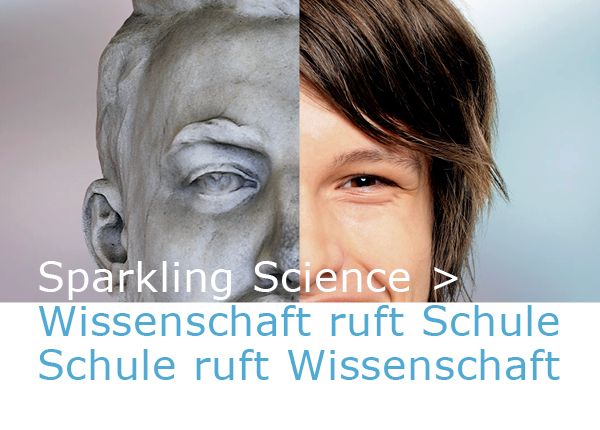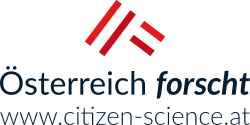Zeit.shift
Offers active beyond the duration of Zeit.shift
The Zeit.shift project ended in June 2023. The central web offerings continue to be active beyond the project duration. Specifically, the results can be followed via the website. The newly generated web portal is accessible worldwide and the text material provided (several million newspaper pages) is searchable and downloadable. Geodata and content tags can be assigned via an external platform and the online game Ötzit! is freely available. However, an evaluation of the generated data, as formulated in the project description, no longer takes place after the end of the project.
What is the Zeit.shift project about?
The aim of the Zeit.shift project is to establish a long-term, cross-border cooperation for the preservation, development and dissemination of the cultural text heritage of Tyrol and South Tyrol from the late 19th and early 20th centuries. Using historical newspapers as a prototype, the text collections are to be preserved in the long term and made accessible to the general public in a web portal. This offers the opportunity to learn more about one's own cultural heritage and to learn to appreciate historical texts as a source for exciting discoveries. An important focus of the project is the active involvement of the population. Interested citizens are invited to participate and can contribute to the text indexing by annotating the text material online. Together with citizens, relevant key terms and the correct location of the text excerpts will be added in order to improve the usability and searchability of the historical text material.
How can one participate?
Via the Historypin platform, interested citizens can participate in text indexing by describing the content of advertisements in historical daily newspapers and geolocating them via Google Maps in order to virtually reconstruct the shopping streets of 100 years ago. In this way, one can gain an insight into which products were traded and which events took place in yesterday’s world. One discovers professions and trades, some of which no longer exist, and has the opportunity to draw one's own comparisons of what can be found in the places mentioned today. This is only a small excerpt of the variety of topics offered by the advertisements in the press of that time - a voyage of discovery into the world of our ancestors. Participation is not tied to a specific time or place; all you need is internet access and a computer or smartphone. Tutorials will help with questions, and there is also the possibility of contacting the Zeit.shift project staff directly (This email address is being protected from spambots. You need JavaScript enabled to view it.). The citizen science activities are aimed at all citizens and no special knowledge is necessary to participate in the project.
Another citizen science approach in the Zeit.shift project was developed with the gamification application Ötzit!. The online game Ötzit! is about saving Ötzi from dangerous animals by correctly typing out falling words in Fraktur script. A game against time! Ötzit! is primarily aimed at German-speaking pupils aged 11-14, but is open to anyone interested. The aim of the game is to create an awareness of the digitised newspaper collections and to practise reading historical documents in Fraktur script. All data anonymously provided by the players (e.g. typed words) was analysed and used to explore automated OCR corrections via crowdsourcing and to improve the searchability of the digitised collections.
Why is it important and what happens to the data?
The benefit for the citizens is to experience the newspapers as a historical source and to learn something about their own cultural heritage through them. Together with the project team, they discover hidden archival treasures, thus making an invaluable contribution to indexing. In the project, the Zeit.shift portal for archiving, managing, researching and presenting digitised historical daily newspapers of the Tyrolean region was implemented. Using search filters, such as place and family names, time period, etc., the search results can be narrowed down precisely and the search term appears in the full text highlighted in colour. The data generated by the Citizen Science activities serve as support for the computer-linguistic analysis (e.g. correction of recognition errors in digitised texts in Fraktur script).
Photo gallery
-
 Unterinntaler Bote, 03.01.1908, S. 6 Unterinntaler Bote, 03.01.1908, S. 6
Unterinntaler Bote, 03.01.1908, S. 6 Unterinntaler Bote, 03.01.1908, S. 6 -
 Schwazer Lokal-Anzeiger, 16.04.1927, S. 4 Schwazer Lokal-Anzeiger, 16.04.1927, S. 4
Schwazer Lokal-Anzeiger, 16.04.1927, S. 4 Schwazer Lokal-Anzeiger, 16.04.1927, S. 4 -
 Unterinntaler Bote, 03.01.1908, S. 6 Unterinntaler Bote, 03.01.1908, S. 6
Unterinntaler Bote, 03.01.1908, S. 6 Unterinntaler Bote, 03.01.1908, S. 6 -
 Reuttener Nachrichten, 04.07.1930, S. 3 Reuttener Nachrichten, 04.07.1930, S. 3
Reuttener Nachrichten, 04.07.1930, S. 3 Reuttener Nachrichten, 04.07.1930, S. 3 -
 Unterinntaler Bote, 03.01.1908, S. 8 Unterinntaler Bote, 03.01.1908, S. 8
Unterinntaler Bote, 03.01.1908, S. 8 Unterinntaler Bote, 03.01.1908, S. 8 -
 Unterinntaler Bote, 03.01.1908, S. 10 Unterinntaler Bote, 03.01.1908, S. 10
Unterinntaler Bote, 03.01.1908, S. 10 Unterinntaler Bote, 03.01.1908, S. 10 -
 Unterinntaler Bote, 03.01.1908, S. 7 Unterinntaler Bote, 03.01.1908, S. 7
Unterinntaler Bote, 03.01.1908, S. 7 Unterinntaler Bote, 03.01.1908, S. 7 -
 Reuttener Nachrichten, 27.06.1930, S. 4 Reuttener Nachrichten, 27.06.1930, S. 4
Reuttener Nachrichten, 27.06.1930, S. 4 Reuttener Nachrichten, 27.06.1930, S. 4 -
 Schwazer Lokal-Anzeiger, 16.04.1927, S. 4 Schwazer Lokal-Anzeiger, 16.04.1927, S. 4
Schwazer Lokal-Anzeiger, 16.04.1927, S. 4 Schwazer Lokal-Anzeiger, 16.04.1927, S. 4 -
 Reuttener Nachrichten, 01.02.1929, S. 4 Reuttener Nachrichten, 01.02.1929, S. 4
Reuttener Nachrichten, 01.02.1929, S. 4 Reuttener Nachrichten, 01.02.1929, S. 4
https://www.citizen-science.at/en/conference/tag/media?start=10#sigProId4ff201727f
Video

This project fulfilled version 1.1 of the quality criteria for citizen science projects on Österreich forscht.
Categories to come
What is the project specifically about?
So much hangs on just one thing - and yet words sometimes fail us. How do we talk about our bodies and the things that we need, want, and do when it comes to sex and sexual pleasure? And who do we talk to about these things? Categories to Come invites everybody to put their sexuality into words, and to discuss new words or new uses of words with other people. Goal of the project is to create a platform and gather resources, that open up so far unnamed subject areas of sexuality. They will be accessible both for personal gain and interdisciplinary research.
How can citizens participate in research?
Citizens are actively involved in shaping the future vocabulary of sexual language and provide important impulses for research. Citizens can write down their own terms and descriptions for intimate activities and their own sexual desire. They can also collect and name passages from songs, books or films that are sexually interesting to them. They can look at films and photos and other cultural works and describe what can be seen there and index them. They can read books and texts and filter out places with sexual acts and tag them.
What happens to the results?
The results form a resource to illustrate previously unnamed areas of sexuality. This data collection will be organized and made available as a database and can be used to enhance studies by researchers working in linguistics, social sciences, sexology, gender studies and literature as well as for art production.
What does the research contribute to?
Categories to come helps to build a new resource for research on sexuality in different disciplines. The project is based on two assumptions, namely, 1) the existing sexual vocabulary has only been partly described, and 2) because of sexuality’s visual nature, lack of language, and location within the realm of experience, there are many fantasies and sex acts that nobody has yet attempted to put into words. The project Categories to Come combines artistic and academic research interests. In contrast to purely scientific research, the artistic element also allows one to become creative and to create new words. Categories to come thus contributes to making research into sexual language and sexual desire more diverse.
This project shows what the artistic aspect can be in a research context, how it produces a different kind of knowledge than purely scientific research and how this can make a contribution in an interdisciplinary context. By making the results publicly accessible, citizens can use the database themselves and find new ways and terms to talk about sexuality. This counteracts tabooing and promotes a conscious discussion of one's own sexuality.
Image gallery
-
 "so much revolves around this one topic" "so much revolves around this one topic"
"so much revolves around this one topic" "so much revolves around this one topic" -
 "and still we sometimes miss words" "and still we sometimes miss words"
"and still we sometimes miss words" "and still we sometimes miss words" -
 Facebook header of the project Facebook header of the project
Facebook header of the project Facebook header of the project
https://www.citizen-science.at/en/conference/tag/media?start=10#sigProId8680991c3e
This project fulfilled version 1.1 of the quality criteria for citizen science projects on Österreich forscht.
City-Country-Child
An Intergenerational Ethnography on Rural Images of Longing
Taking the unique photography collection of the Austrian Museum of Folk Life and Folk Art as its starting point, the research project “Stadt-Land-Kind” (City-Country-Child) investigated the myth of a “better life in the countryside” from an intergenerational perspective. In dialogue with social scientists, and in exchange with older generations of parents and grandparents, pupils conducted research into prevailing urban/rural sentimental and ideological constructions and the corresponding images and meanings they produce. The project asked about the social models and (future) promises that are deeply rooted in images of the idyllic countryside. What do we say and what do we feel when we connect these often backwards-looking pictures with our present-day life? On the one hand, the project’s objective was to deconstruct conventional notions of authenticity that are often used in today’s images of the countryside by touristic, commercial and political branding. On the other hand, by way of asking what images we use to “write” our history of the countryside, the project aimed to update rural conceptions through a critical investigation of historically and culturally constructed motifs of longing, as well as by an active-reflexive production of new images of the countryside.
For two years – the entire duration of the project – we conducted our research in close cooperation with three partner schools from three rural regions of Austria: Waldviertel, East Tyrol and Bregenzer Wald. The schools were the Primary School Rastenfeld (Lower Austria), the New Middle School Kals am Großglockner (Tyrol) and the Werkraumschule Bregenzerwald (Vorarlberg). This constellation included three age groups as well as three different types of schools. Overall, more than 100 citizen scientists participated in the project, including the pupils, their families and further local participants. This enabled us to differentiate age- and region-specific perspectives. During the collective field research and image analysis three different methods were applied: intergenerational picture talks, photo expeditions (these first two methods were specifically developed for our project), and research postcards in the tradition of historical ethnographic field research. During the intergenerational picture talks, pupils shared their personal memories and experiences – elicited by historical and contemporary images of the countryside – as well as their knowledge and conceptions of the future of country life with their parents and grandparents, teachers and neighbours. During the photo expeditions the pupils produced new images of the countryside depicting their personal perspectives on their rural environment, which allowed us to consciously counter current visual politics as is often seen in advertising and the like. 108 photographs and 50 postcards entered the collection of the Museum of Folk Life and Folk Art as contemporary documents.
Based on our manifold findings and visual-material productions, we curated the research exhibition Retropia: Talking about Rural Images of Longing, which was on display from April to June 2019 at the Museum of Folk Life and Folk Art in Vienna. The exhibition fostered an understanding of the research process with contributions by the pupils. The Top Citizen Science expansion project, “Stadt-Land-Bild. A Social Image Analysis of Contemporary Conceptions of Longing,” continued our research with visitors in the exhibition space.
The exhibition illustrated our core finding that a new longing for the countryside is a highly relational phenomenon. Fantasies of a good life in the countryside are not necessarily linked to certain geographical regions, places or locations. Far more, they are shaped by biographical experiences and actual life conditions that come into play when talking about images in a multi-sensory and multi-perspectival way. Longing for the countryside particularly presented itself as an alternate construction to a person’s everyday life and to the present time. When comparing the different generations, parents seemed to have a strong desire for quietude and slowing down. Too, sensory-physical memories like handicrafts or hiking proved to be a strong reference to the country life for members of all generations. While these leisure activities are usually fun for the pupils, some members of the grandparent generation reacted to historical photographs with memories of times of deprivation; this introduced a critical perspective towards the “good old days.”
The different points of view and stories gathered from the Intergenerational Picture Talks, combined with the experiences from the active-reflexive image production with the pupils through photo expeditions and postcard workshops, brought about new and multilayered perspectives and insights for us. The impetus for educational policy resided in the exploration of an open concept of Heimat (“home”) and the enhacement of visual literacies among pupils and their families. There is scientific benefit to be gained from empirically observing today’s manifestation of the usually vaguely discussed phenomenon of longing for the countryside. Differentiation was achieved by content analysis as well as visual-material analysis.
Team:
Martina Fineder, Paul Reiter (Academy of Fine Arts Vienna)
Luise Reitstätter, Mark Elias Napadenski (University of Vienna)
Herbert Justnik, Astrid Hammer, Katharina Zwerger-Peleska (Austrian Museum of Folk Life and Folk Art)
Iris Ranzinger (photography, digital images, archive)
Project duration & project partners:
“City-Country-Child” was a project of the Academy of Fine Arts Vienna in cooperation with the Laboratory for Cognitive Research at the University of Vienna, the Austrian Museum of Folk Life and Folk Art, the Werkraum Bregenzerwald, the Primary School Rastenfeld, the New Middle School Kals am Großglockner and the Werkraumschule Bregenzerwald. It ran from 1 September 2017 until 31 October 2019. It was conducted through the grant program Sparkling Science, funded by the Federal Ministry of Education, Science and Research.
 |  |  |  |
Video
This project fulfilled version 1.1 of the quality criteria for citizen science projects on Österreich forscht.


